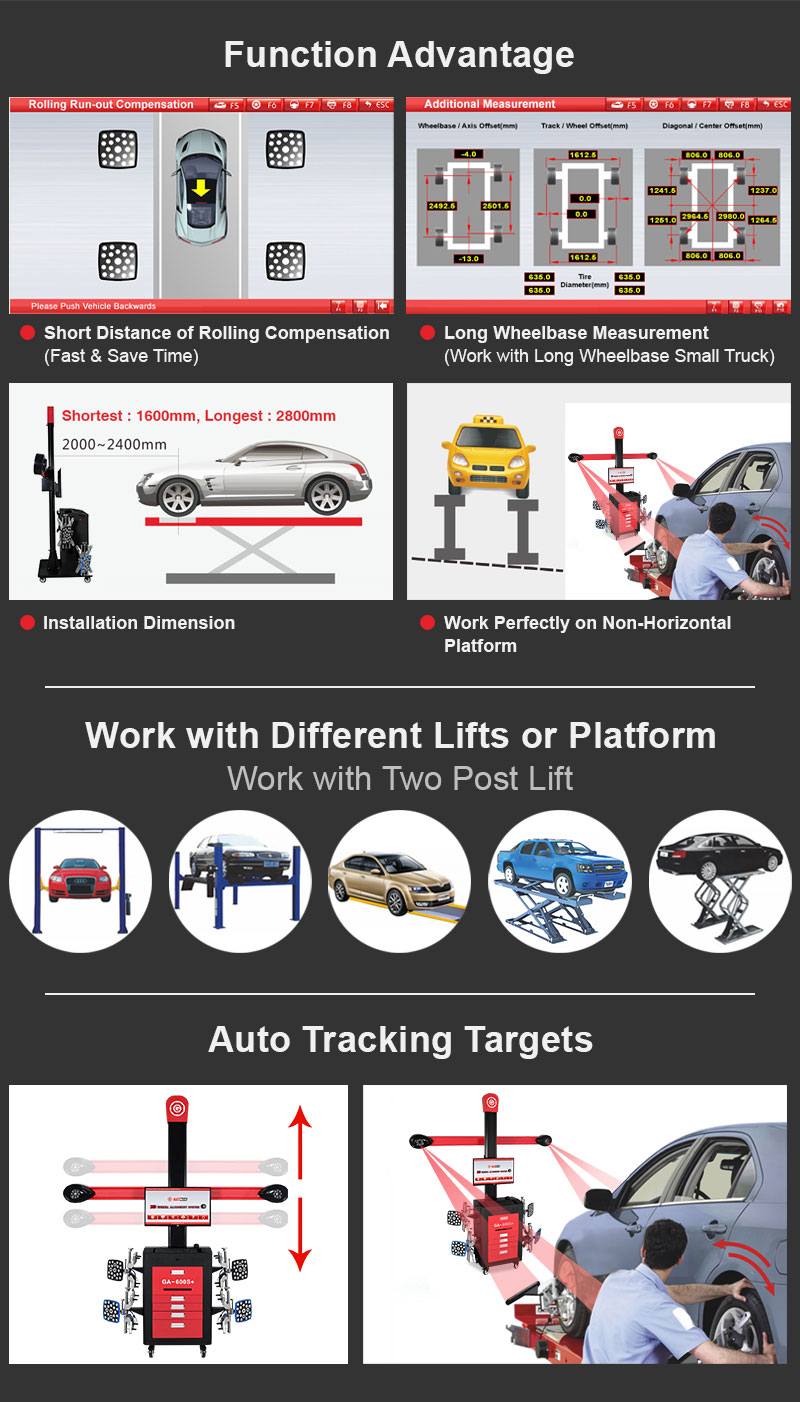Can a 3D Wheel Aligner detect suspension problems?
If you have ever wondered whether a 3D wheel aligner can identify suspension issues in your vehicle, you’re not alone. In today’s automotive maintenance landscape, advanced diagnostic tools like 3D wheel aligners play a crucial role in pinpointing various problems affecting vehicle performance and safety. Let’s delve into how these innovative devices can detect suspension issues and why they are indispensable for modern auto service centers.
I. What is a 3D Wheel Aligner?
Before exploring its capabilities in detecting suspension problems, it’s essential to understand what a 3D wheel aligner is. Simply put, a 3D wheel aligner is a sophisticated tool used by automotive technicians to measure and adjust the angles of a vehicle’s wheels relative to each other and the ground. Unlike traditional aligners, which use 2D imaging, 3D aligners employ advanced cameras and sensors to provide a comprehensive, three-dimensional view of wheel positions.
II. How Does a 3D Wheel Aligner Work?
1. Measuring Process
The process begins with positioning the vehicle on a specialized alignment rack equipped with multiple camera sensors. These sensors capture precise images of the wheels and their orientation.
2. Key Components
A typical 3D wheel aligner consists of high-resolution cameras, reflective targets mounted on each wheel, computer software for analysis, and a display interface. The aligner measures various parameters such as camber, caster, and toe angles.
III. Can a 3D Wheel Aligner Detect Suspension Problems?
Now, the critical question: Can a 3D wheel aligner identify suspension issues? The answer lies in understanding what suspension problems entail and the capabilities of this advanced diagnostic tool.
1. Understanding Suspension Issues
Suspension problems refer to issues with the system that supports a vehicle’s weight, absorbs road shocks, and maintains tire contact with the ground. Common problems include worn-out shocks or struts, broken springs, loose or damaged components, and misaligned or bent control arms.
2. Capabilities of 3D Wheel Aligners
While 3D wheel aligners excel in measuring wheel angles and alignments, they also indirectly detect certain suspension problems. By analyzing wheel alignment data, technicians can identify irregularities that may point to underlying suspension issues.
For instance, uneven tire wear patterns, abnormal camber or caster angles, and off-center steering wheel positions can all be indicators of suspension problems affecting wheel alignment. Additionally, a 3D wheel aligner may reveal deviations in specified alignment parameters due to suspension-related issues.
IV. Benefits of Using a 3D Wheel Aligner
The use of a 3D wheel aligner offers several advantages in diagnosing suspension problems:
Improved Accuracy
The three-dimensional imaging capability of these aligners provides superior accuracy in measuring wheel angles, enhancing the detection of subtle suspension abnormalities.
Time Efficiency
Compared to traditional aligners, 3D wheel aligners expedite the measurement process, allowing technicians to diagnose and address suspension issues promptly.
Comprehensive Analysis
3D wheel aligners provide detailed reports and visual representations of alignment data, facilitating a comprehensive analysis of suspension-related deviations.
V. Limitations of 3D Wheel Aligners
However, it’s important to note that while 3D wheel aligners are highly effective tools, they have limitations in directly diagnosing suspension problems:
Detection Sensitivity
Certain suspension issues, such as internal wear or damage to components, may not manifest as alignment deviations that are detectable solely through wheel angle measurements.
Need for Complementary Diagnostics
To confirm suspected suspension problems, additional diagnostic procedures such as visual inspections, road tests, and component checks are often necessary.
VI. Signs of Suspension Problems
To preemptively address suspension issues, drivers should be aware of common signs indicating potential problems:
- Excessive bouncing or swaying
- Uneven tire wear
- Pulling or drifting to one side
- Noise or vibration while driving
- Difficulty steering or handling
Importance of Early Detection
Early detection of suspension problems not only ensures safety but also prevents further damage to other vehicle components, such as tires and steering systems.
VII. How to Interpret 3D Wheel Aligner Results
When reviewing alignment data from a 3D wheel aligner, pay attention to specific parameters and deviations that may indicate suspension issues:
Alignment Parameters and Deviations
Focus on camber, caster, and toe angles; irregularities in these measurements may correlate with underlying suspension problems.
Identifying Suspension Indicators
Look for alignment patterns that suggest worn-out or damaged suspension components, which may require further inspection and repairs.
VIII. When to Use a 3D Wheel Aligner
Routine use of a 3D wheel aligner is recommended for:
- Regular maintenance schedules
- Post-suspension repairs or modifications
IX. Professional vs. DIY Wheel Alignment
While DIY alignment kits are available, professional wheel alignment services offer distinct advantages:
Precision and Expertise
Certified technicians possess the expertise and tools necessary to accurately diagnose and correct alignment and suspension issues.
Safety Considerations
Properly aligned wheels ensure optimal vehicle safety and performance, minimizing risks associated with misaligned suspension components.
Conclusion
In conclusion, while a 3D wheel aligner primarily measures wheel angles, it can indirectly detect suspension problems by identifying alignment irregularities. Combining advanced technology with skilled interpretation, these aligners play a vital role in maintaining vehicle safety and performance.
Get Access Now: https://www.gat-matic.com
FAQs
1. Can a 3D wheel aligner fix suspension issues?
No, a 3D wheel aligner only measures and adjusts wheel angles. Suspension repairs require additional diagnosis and physical repairs.
2. How often should I check my vehicle’s alignment?
It’s recommended to check alignment during routine maintenance or if you notice steering irregularities or tire wear.
3. Is wheel alignment the same as balancing?
No, wheel alignment refers to adjusting the angles of the wheels, while balancing ensures even weight distribution of the tire and wheel assembly.
4. Can a wheel alignment cause steering wheel vibration?
Yes, improper alignment can lead to steering wheel vibrations due to uneven tire wear or misaligned components.
5. What’s the difference between 2D and 3D wheel alignment?
2D wheel alignment measures wheel angles in two dimensions (front view), while 3D aligners provide a comprehensive view (360 degrees) of wheel positions.
Describe Your Needs In Detail!
We will carefully evaluate your needs and give professional solutions.



